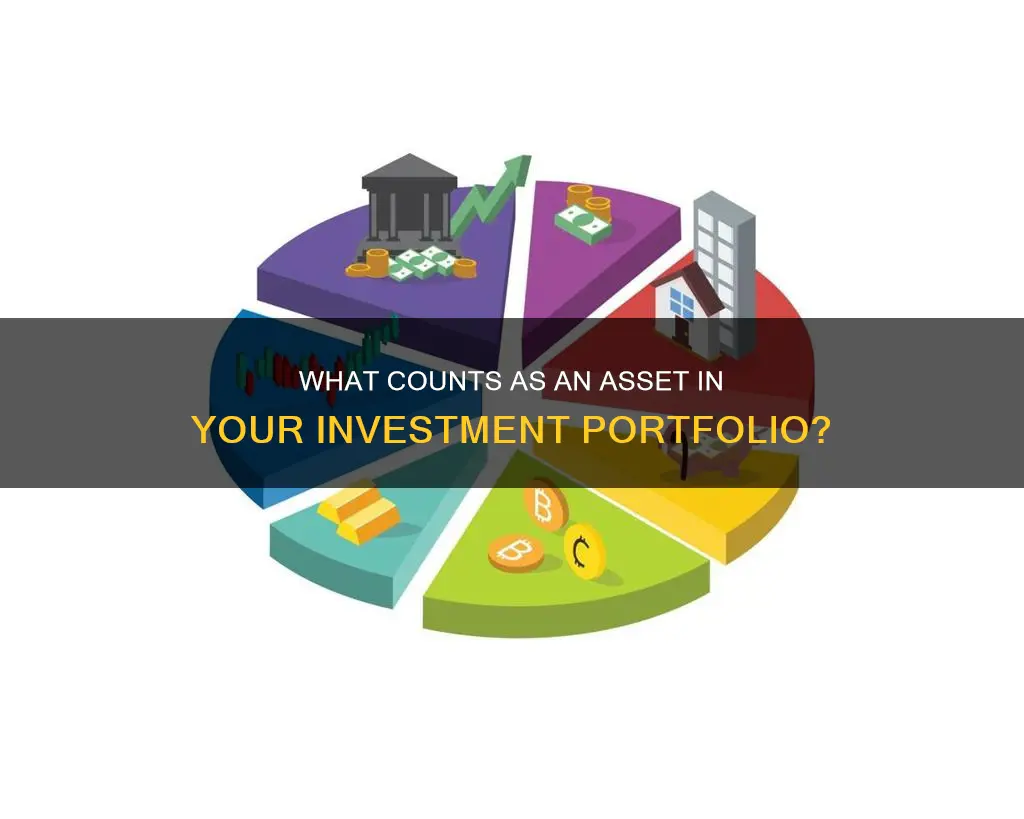
An investment portfolio is a collection of financial investments or assets. These assets can include stocks, bonds, commodities, cash, cash equivalents, real estate, and cryptocurrencies. The goal of an investment portfolio is to build wealth over time. A portfolio can be managed by the investor themselves or by a money manager, financial advisor, or another finance professional. A well-diversified portfolio is generally recommended to reduce risk.
| Characteristics | Values |
|---|---|
| Definition | A collection of financial investments or assets. |
| Types of Assets | Stocks, bonds, commodities, cash, cash equivalents, real estate, art, private investments, mutual funds, exchange-traded funds (ETFs), gold, cryptocurrencies, etc. |
| Diversification | A key concept in portfolio management. |
| Risk | Depends on the investor's risk tolerance. |
| Time Horizon | Depends on the investor's goals. |
| Management | Can be managed by the investor or a financial professional. |
What You'll Learn

Stocks, bonds, and other securities
Stocks:
Stocks represent partial ownership or equity in a company. When you buy a stock, you purchase a small portion of the company, known as a share or shares. The value of your investment increases as the company performs well and experiences growth. However, the opposite is also true; if the company's performance declines, the value of your shares may decrease as well.
Stocks are generally considered riskier than bonds because there is no guarantee of positive performance. Nonetheless, stocks offer the potential for higher returns. They are also known for their liquidity, making them easy to buy and sell.
Bonds:
Bonds, on the other hand, are a type of loan to a company or government. When you invest in a bond, you are lending money to the issuer, who will pay you interest over a fixed period. At the end of the bond's maturity period, the issuer repays the original amount borrowed.
Bonds are considered safer than stocks, but they are not entirely risk-free. There is a chance that the issuer may go bankrupt and default on the loan, resulting in losses for investors.
Other Securities:
In addition to stocks and bonds, other types of securities can be included in an investment portfolio. These may include mutual funds, exchange-traded funds (ETFs), real estate, commodities, and alternative investments.
Mutual funds pool money from multiple investors to purchase a diverse range of securities, providing instant diversification. ETFs are similar but tend to have more flexible trading options and often track a specific index or sector.
Real estate offers the potential for income generation through rent and long-term capital appreciation. Commodities, such as precious metals, energy resources, and agricultural products, can provide portfolio diversification and a hedge against inflation.
Alternative investments include art and collectibles, cryptocurrencies, hedge funds, and private equity. These investments often require specialised knowledge and carry higher risks but can also offer higher potential returns.
Building a Portfolio:
When constructing an investment portfolio, it's essential to consider your risk tolerance, financial goals, and time horizon. Diversification across different asset classes, sectors, and geographic regions is a crucial strategy to manage risk and improve returns.
The right mix of stocks, bonds, and other securities will depend on your individual circumstances and preferences. Regular portfolio rebalancing is necessary to maintain your desired asset allocation as market conditions change.
In summary, stocks, bonds, and other securities play vital roles in investment portfolios. Understanding the characteristics and risks of each type of security will enable you to make informed decisions and build a portfolio aligned with your financial goals and risk tolerance.
Rebuilding Your Investment Portfolio: Strategies for Success
You may want to see also

Risk and return
The underlying principle of risk and return is that higher-risk investments tend to offer higher returns, and vice versa. This relationship is often referred to as the risk-return tradeoff, where higher potential returns are associated with greater uncertainty or risk of losses. However, it is important to note that high-risk investments do not always generate higher returns, and there is a possibility of incurring losses.
When constructing an investment portfolio, diversification is a key strategy for managing risk and optimising returns. Diversification involves spreading investments across different asset classes, sectors, and geographical regions. By allocating capital to a range of investments, investors can reduce the impact of any single asset's poor performance on the overall portfolio. Diversification helps to lower risk and can lead to more stable returns.
The optimal portfolio for an individual investor will depend on their risk tolerance, investment objectives, time horizon, and other factors such as tax position and liquidity needs. Aggressive investors, for example, tend to assume greater risks in pursuit of greater returns, while defensive investors focus on more stable investments that perform well in both good and bad economic times.
To assess the risk and return of a portfolio, investors use metrics such as alpha, beta, and Sharpe ratios. The alpha ratio measures excess returns on an investment relative to a benchmark, while beta shows the correlation between a stock and the overall market. The Sharpe ratio helps determine if the investment risk is worth the potential reward by comparing the adjusted return to the level of risk.
In summary, risk and return are critical considerations in investment portfolio management. Diversification, risk assessment, and performance metrics are essential tools for investors to optimise their portfolios and make informed decisions that align with their financial goals and risk tolerance.
From Saving to Investing: Strategies for Your Financial Journey
You may want to see also

Diversification
- Spread the Wealth: Don't put all your money in one stock or one sector. Invest in a handful of companies you know and trust and even use in your day-to-day life. You can also invest in commodities, exchange-traded funds (ETFs), and real estate investment trusts (REITs).
- Consider Index or Bond Funds: Investing in securities that track various indexes is a wonderful long-term diversification investment. By adding some fixed-income solutions, you further hedge your portfolio against market volatility and uncertainty.
- Keep Building Your Portfolio: Add to your investments regularly. If you have a lump sum to invest, use dollar-cost averaging to smooth out the peaks and valleys created by market volatility.
- Know When to Get Out: Stay current with your investments and any changes in overall market conditions. This will help you know when it's time to cut your losses and sell.
- Keep an Eye on Commissions: Understand what you are getting for the fees you are paying. Some firms charge a monthly fee, while others charge transactional fees.
A well-diversified portfolio will typically include a mix of stocks, bonds, cash, real estate, and commodities. It will also reflect the investor's tolerance for risk, return objectives, time horizon, and other constraints such as tax position and liquidity needs.
It's important to note that diversification does not guarantee against loss. However, most investment professionals agree that it is a key component for reaching long-range financial goals while minimizing risk.
Computing Investment Gains: Maximizing Your Portfolio Returns
You may want to see also

Asset allocation
The right asset allocation will depend on an individual's financial goals, risk tolerance, and investment horizon. For example, an investor saving for retirement who is planning to leave the workforce in five years might want to invest a larger portion of their portfolio in more conservative assets such as bonds and cash, to protect what has already been saved. On the other hand, an individual just entering the workforce may want to invest their entire portfolio in stocks, as they have decades to ride out the market's short-term volatility.
There are several types of asset allocation models, including income portfolios, balanced portfolios, and growth portfolios. An income portfolio is made up of 70% to 100% in bonds, a balanced portfolio consists of 40% to 60% in stocks, and a growth portfolio is made up of 70% to 100% in stocks.
There is no one-size-fits-all formula for determining the right asset allocation, but diversification is key to reducing risk and improving returns. Diversification involves spreading investments across different asset classes, sectors, and geographical regions. This helps to ensure that while one part of a portfolio may shrink, others could grow.
It is important to regularly review and rebalance a portfolio to maintain the desired asset allocation. Over time, market moves can alter the composition of a portfolio, and investments may become out of alignment with investment goals. By rebalancing, investors can ensure that their portfolio remains aligned with their risk tolerance and financial objectives.
Strategies for Evaluating Your Investment Portfolio
You may want to see also

Rebalancing
Here's a step-by-step guide to rebalancing your portfolio:
Record:
Keep a record of the total cost of each security in your portfolio, as well as the total cost of your portfolio. These numbers will provide you with historical data for comparison in the future.
Compare:
On a chosen future date, review the current value of your portfolio and of each asset class. Calculate the weightings of each fund in your portfolio by dividing the current value of each asset class by the total current portfolio value. Compare this figure to the original weightings to identify any significant changes.
Adjust:
If changes in your asset class weightings have distorted the portfolio's exposure to risk, take the current total value of your portfolio and multiply it by each of the (percentage) weightings originally assigned to each asset class. The figures you calculate will be the amounts that should be invested in each asset class to maintain your original asset allocation. You may need to sell securities from asset classes that are overweight and purchase additional securities in asset classes that are underweight.
It's important to consider the tax implications of rebalancing. Selling profitable investments may incur taxes, so it might be beneficial to rebalance by only buying more assets of the undervalued asset class or by contributing new funds to the underweighted asset class. Placing your portfolio in a tax-advantaged account, such as an individual retirement account (IRA), can also help avoid taxes.
The optimal frequency of rebalancing depends on various factors, including transaction costs, personal preferences, age, and tax considerations. While professionals recommend rebalancing 401(k) portfolios every quarter, doing so at least once a year is generally considered sufficient.
Investment Philosophy: Portfolio Diversification Strategies Explained
You may want to see also
Frequently asked questions
An investment portfolio is a collection of financial investments or assets, such as stocks, bonds, commodities, cash, and cash equivalents, including closed-end funds and exchange-traded funds (ETFs). It is a term that can vary in meaning depending on the context, but generally refers to a group of investment assets owned by an individual or entity.
Having an investment portfolio allows individuals to diversify their investments, reduce risk, and maximise returns. By investing in different asset classes and geographic regions, individuals can lower the impact of any single asset's poor performance and potentially improve overall returns.
Building an investment portfolio involves understanding your financial goals, risk tolerance, and time horizon. It is important to research and select investments that align with these factors. Regular monitoring, rebalancing, and adjusting your portfolio based on market conditions are also key components of effective portfolio management.







